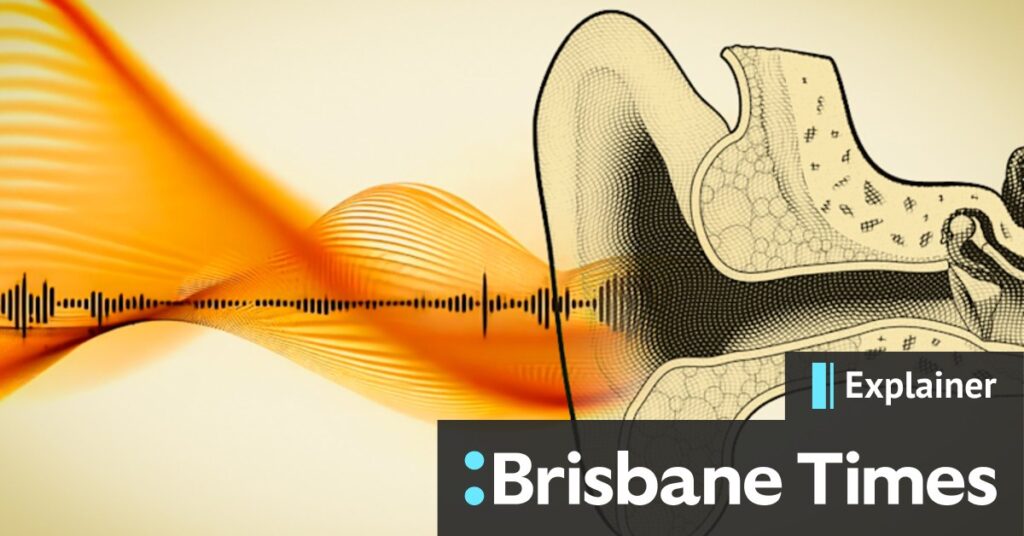
Loud noise traveled everywhere with Daryl Holmes. Whether it was the blaring car radio or the roar of the television at night, the signs of his hearing loss were evident to everyone but him. For years, Holmes, a former crane driver in the steel industry and miner, lived in “sublime ignorance” of his deteriorating hearing. By the time he was 73, he had gone years without acknowledging the issue, a common scenario as people take an average of five years to get a hearing test after noticing problems.
Hearing loss is a significant issue in Australia, affecting at least one in six people, most of whom are 70 or older. By this age, half of the population experiences hearing difficulties. The impact is profound, affecting not only the ability to engage in conversations but also overall health and wellbeing. According to Barbra Timmer, president of Audiology Australia, “Hearing loss has a strong knock-on effect on many aspects of wellbeing.”
The Mechanics of Hearing
Sound, a series of vibrations traveling through air, is measured in frequency or hertz. Humans can generally hear between 20 and 20,000 hertz, with the most sensitive range being between 2000 and 5000 hertz. Our outer ears, known as the pinna, collect these sound vibrations and funnel them into the ear canal, which is lined with earwax to prevent unwanted particles from reaching the middle ear.
The middle ear’s role is crucial in transmitting sound waves through air to the denser fluid in the inner ear. This involves the eardrum and the three smallest bones in the body – the malleus, incus, and stapes – which amplify the vibrations. The final destination is the cochlea, a spiral cavity where sound is converted into signals for the brain. Microscopic hair cells in the cochlea play a pivotal role in this process, acting as “Grand Central Station for hearing,” according to Wayne Wilson, an associate professor of audiology at the University of Queensland.
Understanding Hearing Loss
Presbycusis, or age-related hearing loss, is common, affecting about one in three people over 60 and more than 80 percent over 84. The condition starts subtly around age 40 and progresses gradually. Several factors contribute to this, including genetics, noise exposure, diet, and certain medications known as ototoxic drugs.
Damage to the hair cells in the cochlea, particularly the outer ones, results in reduced sound amplification. Unlike some animals, humans cannot regenerate these hair cells, making the damage irreversible. Wayne Wilson describes the degeneration as akin to a cyclone going through, with once-stiff hairs now smashed and bent.
The Impact on Daily Life
High frequencies are typically the first to be affected, making it difficult for older adults to hear children’s voices or understand certain words. Background noise, particularly in environments with hard surfaces like restaurants, can exacerbate the issue by masking high frequencies.
Hearing loss can range from mild to profound, with varying degrees of difficulty in understanding speech. Other ear conditions, such as otosclerosis and tinnitus, can also affect hearing. In children, ear infections are a common cause of hearing problems, emphasizing the importance of early detection and treatment.
Health Implications and Solutions
The consequences of hearing loss extend beyond communication difficulties. Daryl Holmes, for instance, found himself exhausted from the strain of trying to hear, affecting his performance in activities like bowling. This fatigue is a common consequence, as the brain diverts cognitive resources to compensate for hearing deficits.
Research suggests a link between hearing loss and dementia, with studies indicating that addressing hearing loss could reduce the risk of dementia by up to 40 percent. While not a proven cause, hearing loss can lead to social isolation and reduced brain stimulation, both of which can impact cognitive health.
“I was just beginning to withdraw because I couldn’t hear the conversations. I couldn’t be part of them.” – Michael Bruce, vascular surgeon
Hearing loss is also associated with an increased risk of depression and falls, highlighting the need for comprehensive management strategies. Despite its prevalence, hearing loss has often been viewed as an inevitable sensory impairment, but its broader health impacts are now being recognized.
Moving Forward
Addressing hearing loss involves a combination of prevention, early detection, and treatment. Hearing aids and other assistive devices can significantly improve quality of life, as can lifestyle modifications to reduce exposure to loud noises. Public awareness and education are crucial in encouraging individuals to seek help early and mitigate the broader health impacts of hearing loss.
As research continues to uncover the connections between hearing loss and other health issues, the importance of addressing this common condition becomes ever more apparent. For individuals like Daryl Holmes and Michael Bruce, acknowledging and treating hearing loss has been a transformative step towards maintaining their quality of life and social engagement.





